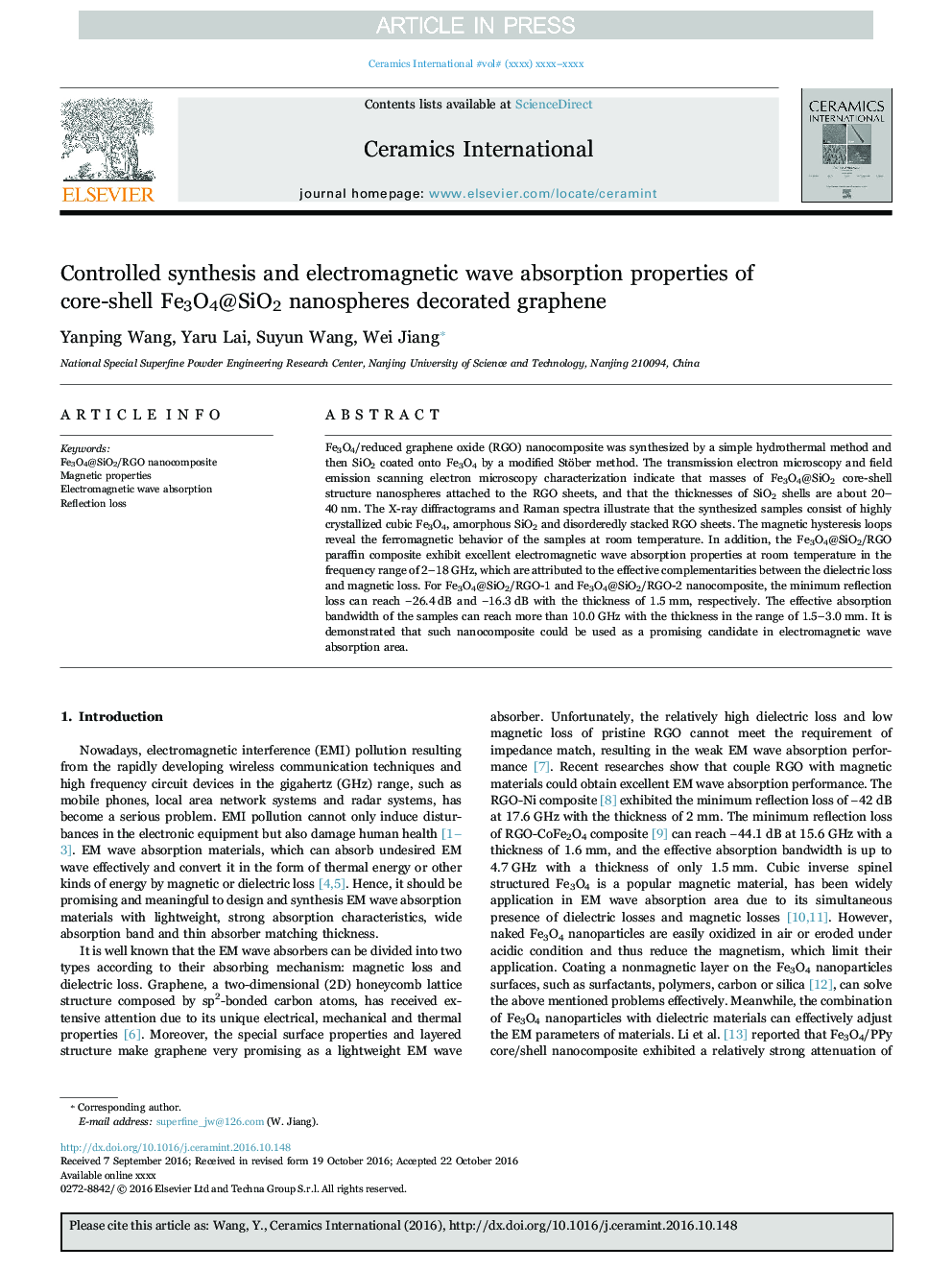| Article ID | Journal | Published Year | Pages | File Type |
|---|---|---|---|---|
| 5438237 | Ceramics International | 2017 | 8 Pages |
Abstract
Fe3O4/reduced graphene oxide (RGO) nanocomposite was synthesized by a simple hydrothermal method and then SiO2 coated onto Fe3O4 by a modified StÓ§ber method. The transmission electron microscopy and field emission scanning electron microscopy characterization indicate that masses of Fe3O4@SiO2 core-shell structure nanospheres attached to the RGO sheets, and that the thicknesses of SiO2 shells are about 20-40Â nm. The X-ray diffractograms and Raman spectra illustrate that the synthesized samples consist of highly crystallized cubic Fe3O4, amorphous SiO2 and disorderedly stacked RGO sheets. The magnetic hysteresis loops reveal the ferromagnetic behavior of the samples at room temperature. In addition, the Fe3O4@SiO2/RGO paraffin composite exhibit excellent electromagnetic wave absorption properties at room temperature in the frequency range of 2-18Â GHz, which are attributed to the effective complementarities between the dielectric loss and magnetic loss. For Fe3O4@SiO2/RGO-1 and Fe3O4@SiO2/RGO-2 nanocomposite, the minimum reflection loss can reach â26.4Â dB and â16.3Â dB with the thickness of 1.5Â mm, respectively. The effective absorption bandwidth of the samples can reach more than 10.0Â GHz with the thickness in the range of 1.5-3.0Â mm. It is demonstrated that such nanocomposite could be used as a promising candidate in electromagnetic wave absorption area.
Related Topics
Physical Sciences and Engineering
Materials Science
Ceramics and Composites
Authors
Yanping Wang, Yaru Lai, Suyun Wang, Wei Jiang,
